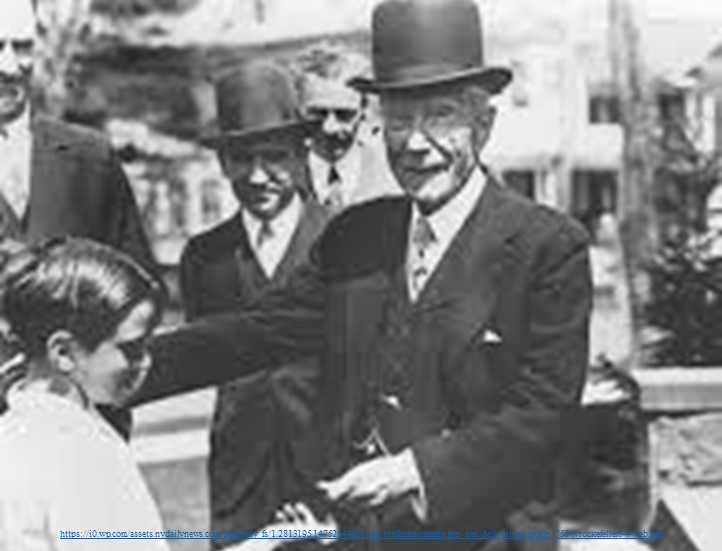
Funding for higher education is down over 20% in a few decades and continues to decrease. Institutional philanthropy designed to add dimensions of excellence to university life in support of students or simply to sustain steady quality is required.
Impact Givers—Philanthropists that work to make measurable change, givers who take pride in advancing a perspective or solving particular problems, are impact givers. Results are the coin of the realm and positive impact for ideas, belief systems, strategies and partnerships that help students is the gold standard. Such principles guide most philanthropy. In higher education, benefit to individuals as well as programs and concepts result in positive philanthropic investment.
Surprise Supporters—Many disciplines struggle for support. The humanities and liberal arts are such disciplines, and patrons in these areas are particularly important. As state support evaporated in recent generations, significant commitments have assisted faculty and students in the humanities., For example, the University of Texas at Austin received a $20 million endowment for faculty and students in the College of Liberal Arts. The donors, Bobby Patton, Junior, and his wife Sherri amassed their fortunes in oil and gas. The importance of the liberal arts is also evidenced by philanthropic investment from unexpected supporters. Apple and Facebook value the power of the liberal arts experience, and put their money where their mouths and hearts are.
Outcomes-based Giving—Federal spending on higher education has crossed the hundred billion dollar mark. Much of the spending fuels loans and grants to students with little guarantee of success that funding students will produce a positive outcome. In addition, lush coffers filled with federally-insured student loans may breed complacency in educational decision-making. In fact, in many cases institutions avoid outcomes-based decision-making, claiming that such action will diminish access for lower-income college aspirants. Such misplaced thinking is even a greater burden to students who carry away extraordinary loan encumbrances. Philanthropic interest directed to outcomes-based giving is on the uptick. This approach rewards completion and job placement (outputs). The Christiansen Institute’s June 2018 Innovation and Quality Assurance in Higher Education reports on the challenges of employing usual high school performance measures, such as test scores, class rank and GPA (inputs), on quality and positive results for college graduates. Universities scuttle innovative processes by upholding the status quo. For example, accreditation processes often calcify innovation. Likewise, treating the university as a “business” is a roundly criticized concept from academy insiders. Philanthropic focus on outcomes-based based giving could have positive benefits in reducing costs and increasing success for college goers and graduates while fostering innovation.
Helpers Becoming Givers—Universities with effective fundraising programs have long understood engaged givers like to help. Seeking help from potential donors, asking their opinions and encouraging supporters to join the mission are strategies that increase the likelihood of receiving a gift. Helpers become givers. In an effectively lead and managed university, drawing potential givers into the academic process is illuminating and encouraging. Insiders, faculty and staff might crassly overlook genuine passion in donors. This view misses the boat. Interest extends beyond named buildings or prime seats at the football game. Moreover, outsiders will find in the preponderance of faculty and students dedication, a commitment to purpose and a sense of accomplishment of mission that encourages further support.
Free Tuition—Observers of higher education express concerns regarding government-funded free tuition. I share that apprehension. However, new approaches to philanthropy are providing donor-funded tuition. While the difference between the public and private tuition elimination may seem modest, the impacts are real. At the NYU School of Medicine, Kenneth G. Langone of Home Depot has committed $100 million in endowment support to finance a “free tuition” plan. The truth, sad though it may be, is that graduating medical students endure the brunt of ever increasing debt. Whether at a regional public university or an international private university, debt is passed on to consumers. Heavily indebted medical graduates, that have borrowed hundreds of thousands of dollars to complete a medical degree, will tend to practice in settings where income can be generated to pay off debt. Low-income neighborhoods in major cities or far-flung rural communities where higher fees are impossible to charge are left medically short-changed and begging for service. The impact of student borrowing goes well beyond the graduates. Society pays.
Universities must be responsive to changing trends and interests of donors. Public and private higher education will increasingly rely on philanthropy. It is essential for regional institutions such as West Texas A&M University to distinctively mark missions in a way attractive to donors for the benefits of mission accomplishment and positive student outcomes.
This is the next wave of philanthropy in higher education. It takes insight, wisdom and entrepreneurship to accomplish positive ends in an ever-changing environment.
